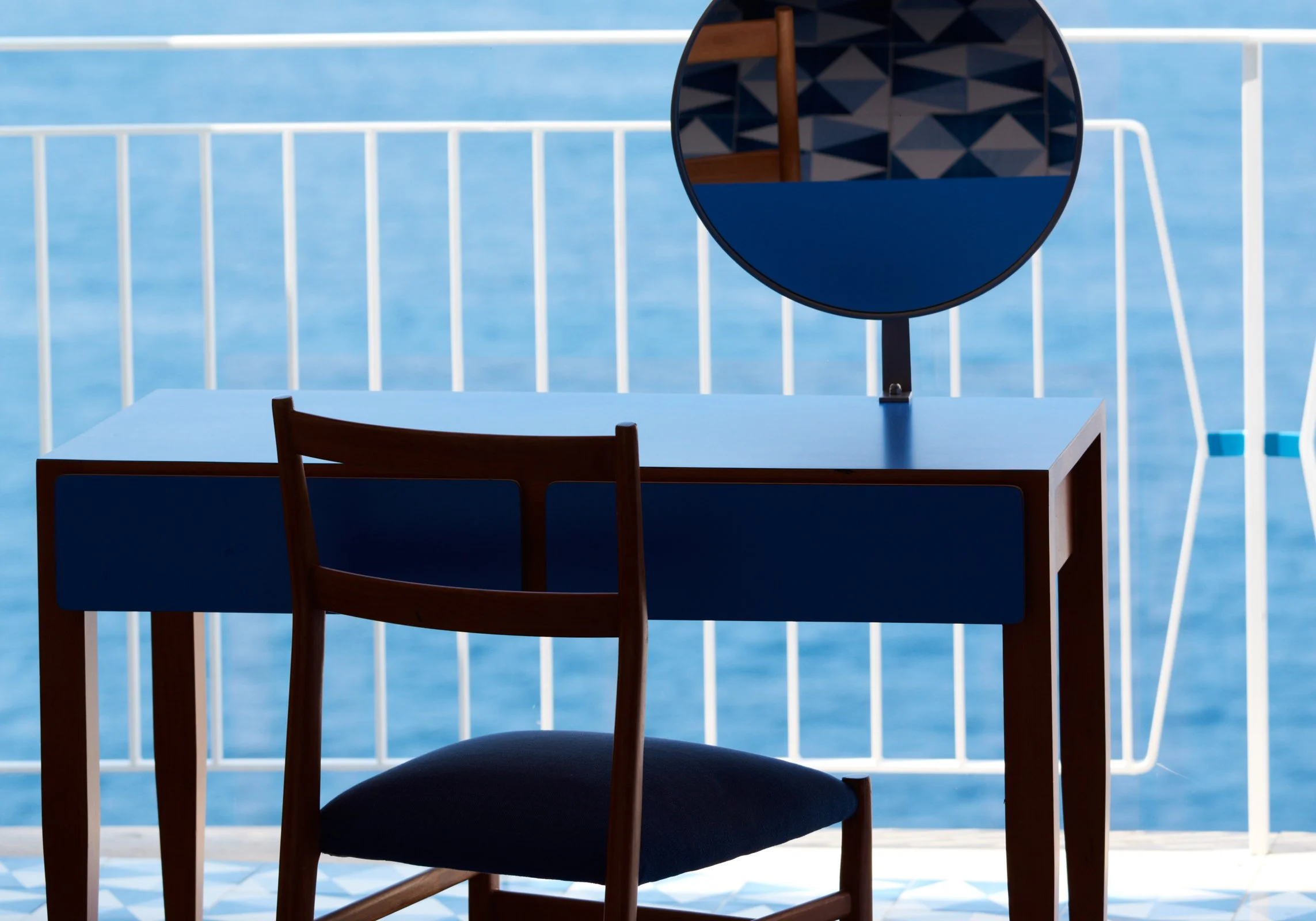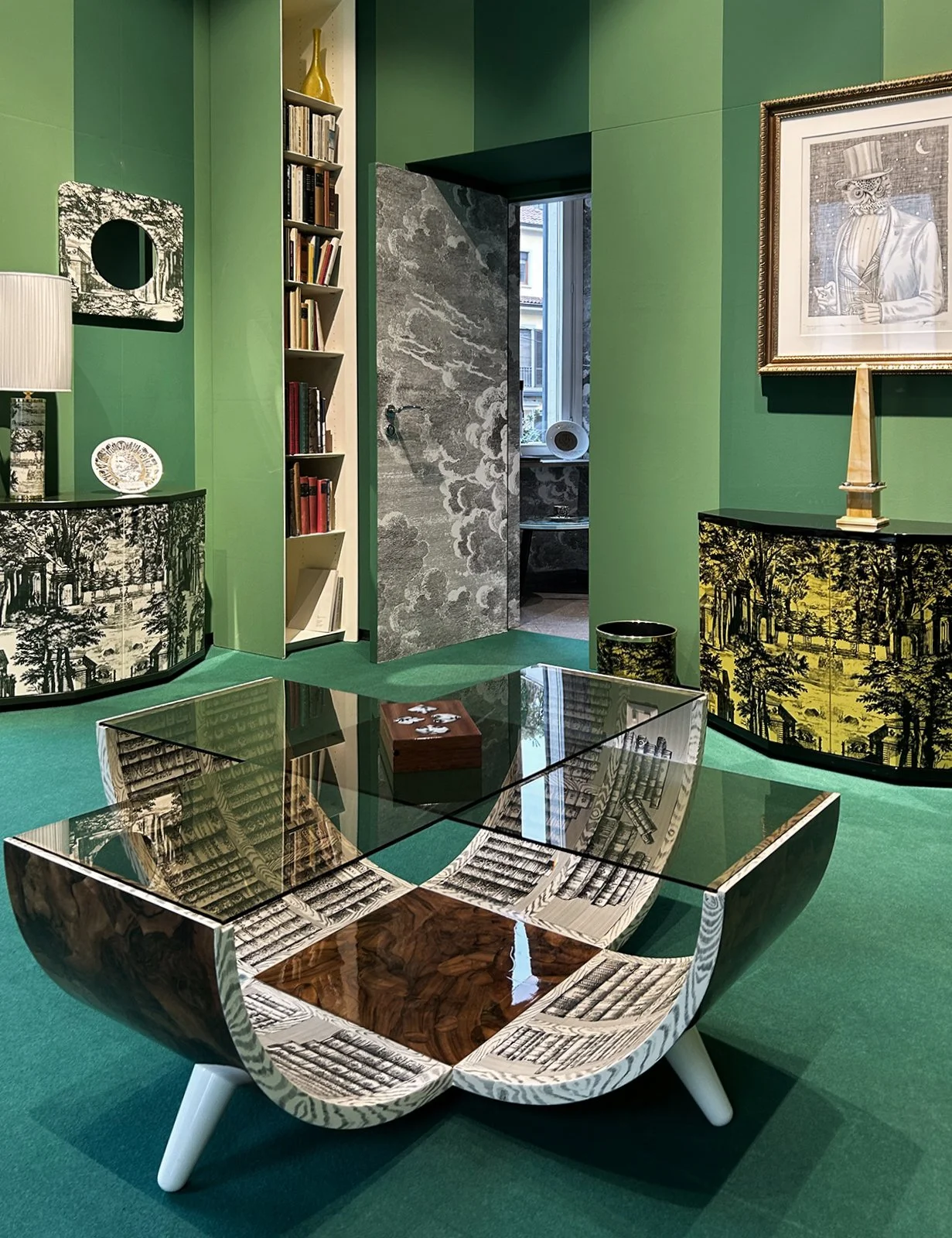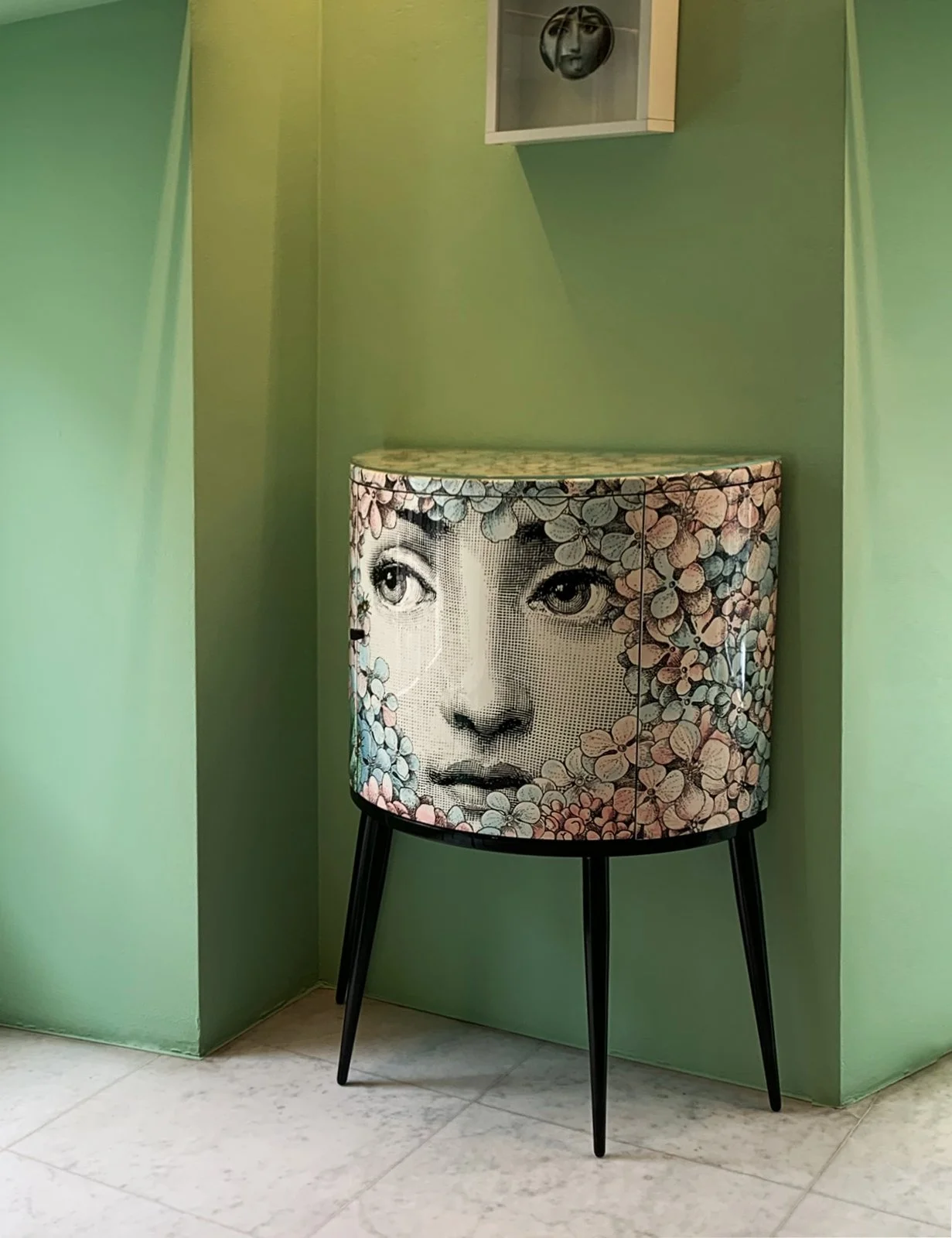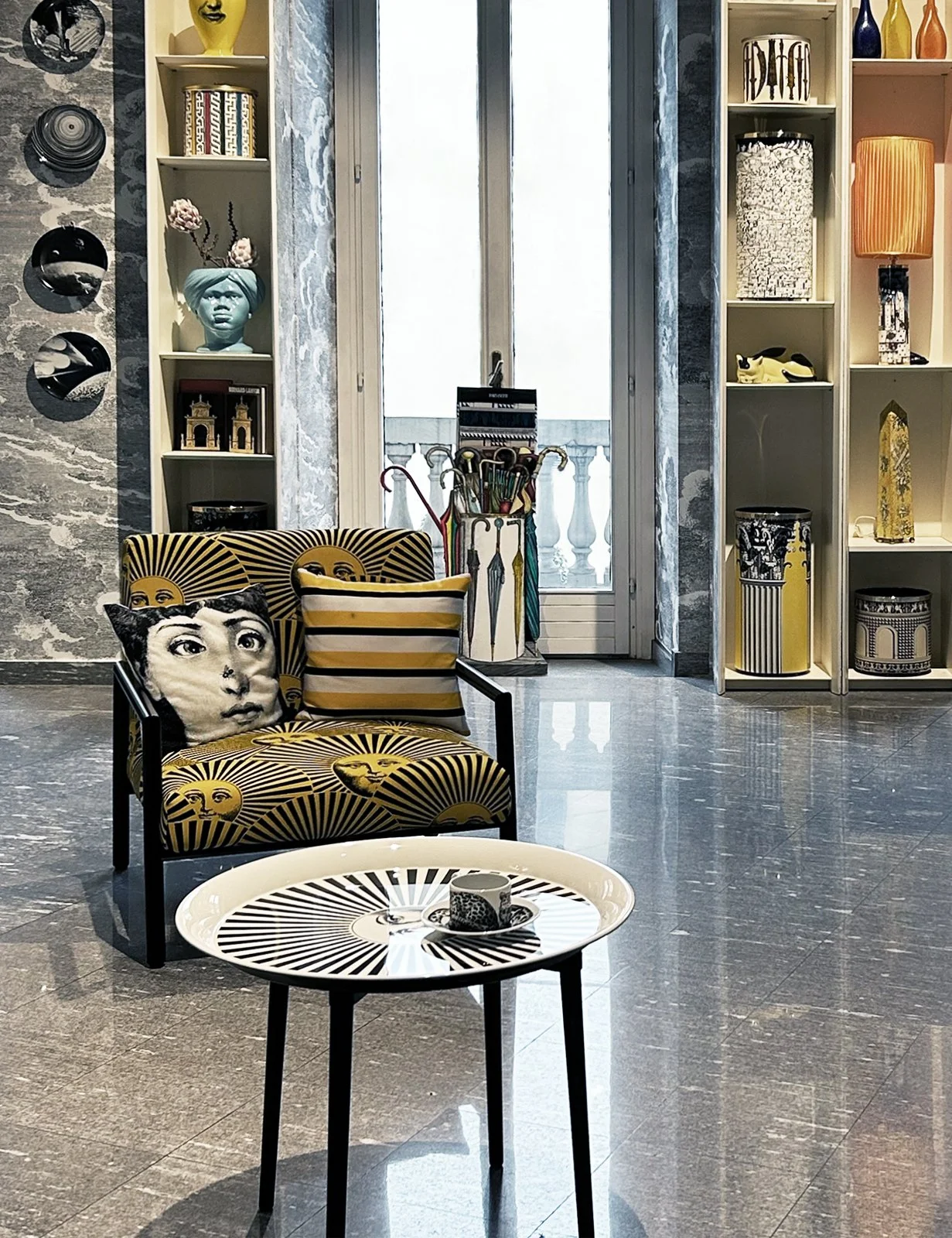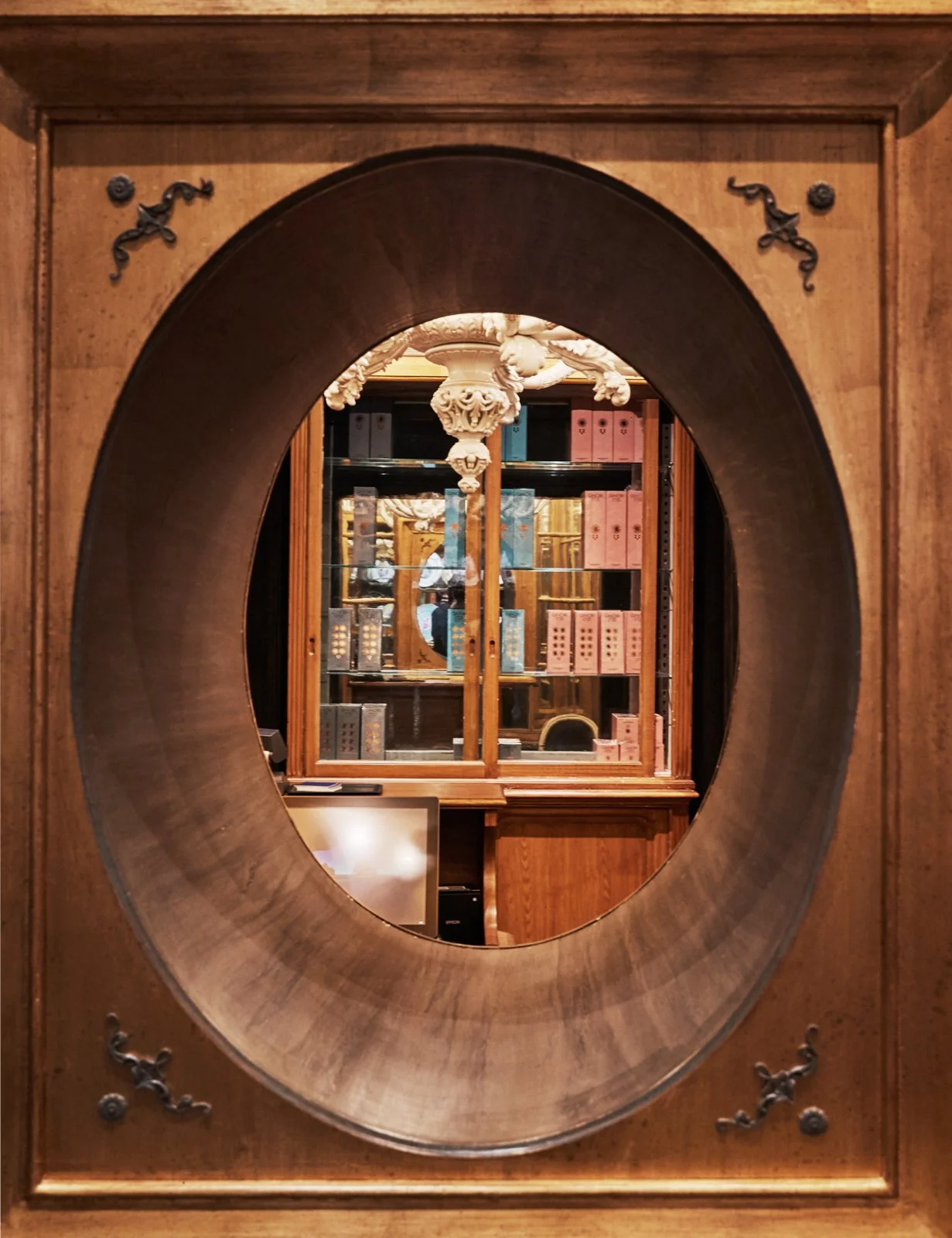Made in Italy
Why is Italy so stylish? The economy is stagnant, the bureaucracy a Kafka-esque jungle, and the politics a populist farce. And yet, when it comes to fashion, interior design, and architecture, few can beat the Italians. It’s like they have their own unique appreciation of life, and understand that appearances matter. Using the best qualities when cooking according to ancient recipes is a tradition based in a philosophy where attention is given also to details, such as the design of the dinner plate and the look of the table.
In this guide, we share our three favourite Italian brands, known for their expertise and craftsmanship, offering products that will last (at least) a lifetime.
Fornasetti
The world of Fornasetti is a universe in and of itself, which the flagship store in Milan, on Corso Venezia, clearly demonstrates. Walking into the store, spread out over three floors, is to find yourself in a stylish version of Alice in Wonderland, where nothing is what it seems. Plates have eyes and pillows look like fish. Monkeys play in the wallpaper and chairs are shaped like ancient pillars. The surreal patterns are matched by the high quality in production and finish. Painstakingly painted by hand, the scope of the production is limited to what the atelier can create without compromising the finished product.
Piero Fornasetti grew up in Milan, and knew already from an early age that he viewed life differently than most people. He opened his atelier, where he conducted technical experiments and printed art books, including works by artists such as De Chirico, Campigli, Savinio, Clerici, and Fontana. In 1939, Gio Ponti asked him to create the magazine cover of the first issue of Domus. Throughout the 1940s, the creative collaboration between the two continued.
Fornasetti was also commissioned to create decorations on public buildings, such as the frescoes of the Recorate of Palazzo Bo in Padua, and the officers’ mess hall in Milan’s Piazza Sant’Ambrogio.
Because of the Second World War, Fornasetti had to escape Italy and seek refuge in Switzerland. Here, he worked as designer for a textile company as well as set designer and costume designer. Traces of these experiences can be seen in the Fornasetti self-portraits and series of harlequins.
The most famous of the many Fornasetti/Ponti-collaborations were the interiors of the Andrea Doria ocean liner, in which Fornasetti furnished and decorated a first-class cabin. However, only a few years later, the ship, travelling too quickly through heavy fog, collided with the M/S Stockholm and sank, resulting in 46 casualties.
Lina Cavalieri was an Italian soprano, during her lifetime widely considered to be the world’s most beautiful woman. Fascinated by the symmetry of her face, Fornasetti created the Tema e Variazioni-series, in which he reproduced and reinterpreted her portrait, over and over. In this way, the face of Cavalieri and the world of Fornasetti became intertwined with one another. Today, many have difficulty separating the two, and the memory of her is kept intact through Fornasetti’s many interpretations.
His most fascinating contribution came towards the end of his working life; the “Metaphysical Room” consisted of thirty-two panels, each three metres tall, to be arranged in various ways but with the aim to create a quiet space for meditation.
Today, Piero Fornasetti’s son Barnaba carries on the legacy, carefully maintaining while also continuously developing the world that his father created through his imagination and unique worldview.
Ginori 1735
The devil is in the details and everything, no matter size, plays a part when it comes to decorating your home. Plates, bowls, vases, cups, pots, and saucers. Items that are part of your everyday life, necessary for having dinner with family and coffee with friends; sometimes used in such mundane contexts that you don’t even always consider what they actually look like.
Having china that you enjoy using is an easy way to make everyday tasks – like setting a table – more enjoyable, not just for you but for the people around you. Eating is a social event and should be treated as such. The reason it’s called “china” is not so strange, as this country was where Marco Polo first encountered the material.
Becoming mesmerised with the smooth surface of porcelain, he first compared it to Mother of Pearl. The Dutch East India Company went on to introduce porcelain objects to several European courts, leading to the trend of porcelain in the chinoiserie style in the 16th century.
In Europe, the porcelain production in Meissen, initiated in 1710 by the Elector of Saxony, Augustus II, is often noted as the starting point of the European porcelain industry.
Twenty-five years later, Marquis Carlo Andrea Ignazio Ginori opened the Manifattura di Doccia, just outside Florence. This was the first Italian production of hard paste porcelain.
Formerly an officer and a senator, married to Elisabetta Corsini (niece of Pope Clement XIII), he was interested in many different aspects of life, and would today perhaps be called a Renaissance man.
He worked hard to make his estates productive, built villages for foreign workers and even attempted to create self-sufficient agricultural systems. Before deciding on building his factory in Doccia, Ginori gathered more than 3,000 samples of Tuscan clay, looking for the place that had the very best quality. He wanted to produce long-lasting products, with value not only for the moment but for generations to come.
He settled on the town of Doccia because this was the home of kaolin, the white, soft clay that is an essential ingredient in the manufacturing of china and porcelain. Named after a hill in China (Kao-ling), samples had been sent to Europe a few decades prior by a French Jesuit missionary. This way, Europeans learnt to understand the basics of porcelain-manufacturing.
Inspired by the Medici family’s methods of using wax as a way for casting bronze, Ginori began producing figurines and small porcelain statues. Teaming up with Carl Wendelin Anreiter von Zirnfeld, they developed a brush painted decoration called “Pittoria”, still used as a hallmark of the Ginori porcelain production today. After Ginori’s passing, the eldest son Lorenzo continued running productions, making the factory a popular destination among aristocrats who wanted to see how their china was made.
The Ginori factory developed with its time, their products mirroring changes in style and taste. In 1896, Swiss-born Giulio Richard acquired the company. Richard modernised the company, while building houses, schools, and canteens for the workers. In 1923, Gio Ponti was named artistic director. One of his most iconic productions was the Oriente Italiano, launched in 1946. Soon, this dinner collection became a prominent part of the aristocratic and bourgeois homes of Italy.
Since 2014, it’s available in ten different colours – azalea, iris, purple, periwinkle, cipria, vermilion, citrine, barium, malachite, and albus – the stylized floral motifs are created using a special airbrushing technique. One year prior, Richard Ginori had become incorporated into the Kering group, and Gucci’s then-creative leader Alessandro Michele had given Oriente Italiano a careful modernization, which included the new colour palette.
Using pieces from the Orientale Italiano-collection today lets you be part of a proud European heritage, built around high quality-ingredients and skilled craftsmanship, but updated to suit contemporary wants and needs.
Nilufar Depot
Milan’s Nilufar has been a reference point in interior design since the late 1970s, when Nina Yashar first established Nilufar Gallery, then specialised in antique carpets. At the time, she was only 21 years old, but found inspiration in the work of her father, who was a rug-dealer.
Soon, the business evolved into a series of shows, aimed at putting the spotlight on beautiful, well-made carpets, with varieties from Kilim to Gabbeh and Aubusson.
Around the turn of the millennium, Nilufar Gallery moved to via della Spiga, where it became a platform for the merging of historical and contemporary design.
The addition of furniture to the business happened organically, through a visit to Stockholm. In Sweden, Yashar found furniture by designers such as Bruno Mathsson, Hans Wegner and Alvar Aalto, which she brought with her back to Milan. Since then, design classics have been an important part of the gallery, as has the continuous discovery of young designers, such as Audrey Large, Bran Vanderbeke, Carlo Lorenzetti, and Johan Viladrich.
Nilufar Depot, on viale Lancetti, is something else, but overlaps in many ways with Nilufar Gallery. Located slightly outside of the city centre, in a former silverware factory, it opened its doors in 2015.
With its 1,500 square metres, and an open layout arranged over three levels (and inspired by Teatro alla Scala), the space holds part of Yashar’s design collection. In this way, the Depot and the Gallery are engaged in dialogue with one another, joined by Yashar’s interest in aesthetics and sense of style.
A visit to Nilufar Depot explains the context of the gallery, while also pointing forward, revealing visions of what is to come.

